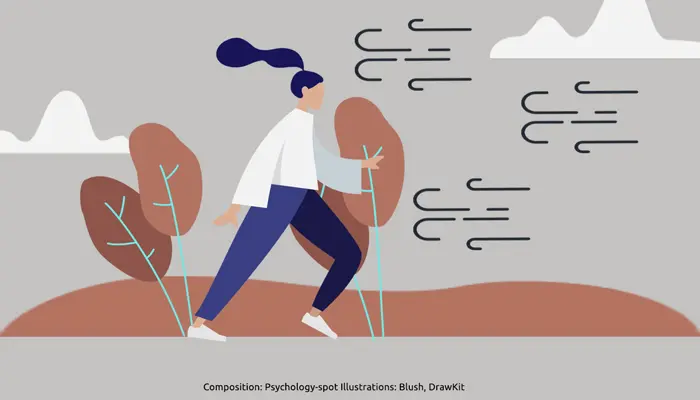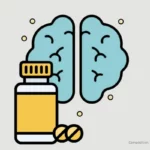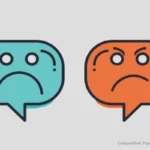
Resilience is an essential capacity for life as it protects us from the impact of adversity and helps us to get up after a fall. Being resilient does not mean becoming invulnerable, but rather being able to take the blows better and even use them to grow. In fact, Viktor Frankl, a surviving psychiatrist from the Nazi death camps, was convinced that “The man who rises is even stronger than the one who has not fallen.”
What does “resilience” mean?
In 1992 the American psychologist Emmy Werner was on Kauai, one of the islands of the Hawaiian archipelago, when she was struck by a special capacity that only some people seemed to have. She analyzed more than 600 children who were born into poverty, a third of whom had a particularly difficult childhood because they lived in dysfunctional families marked by violence, alcoholism and mental illness.
It is not surprising that after 30 years many of these children presented psychological and/or social problems, but some defied the odds against them and became people with stable relationships, good mental balance and jobs in which they felt at ease.
Werner called these children “invulnerable” because she believed that adversity had not taken a toll on them, but then she realized that it was not that the problems did not affect them, but that they used them as a springboard to overcome. Then the concept of resilience emerged.
Resilience in Psychology is a linguistic loan from physics. In physics, resilience is the capacity of some materials to regain their original shape after being subjected to a deforming pressure. In Psychology, resilience is the ability to face stressful and/or traumatic events, overcome them and positively reorganize life to continue growing and looking to the future.
Therefore, the meaning of resilience implies much more than returning to the previous state of equilibrium. It does not simply imply a return to normalcy, but involves a transformative change that leads to learning or growth. The resilient person finds his strength in adversity.
On the other hand, resilience also contains the ability to maintain a certain emotional balance in the midst of the storm. The resilient person is not immune to suffering, but can face it without breaking down emotionally, maintaining a basal level of functioning in their daily life.
Therefore, “Resilience is the natural, human capacity to navigate life well. It is something every human being has — wisdom, common sense. It means coming to know how you think, who you are spiritually, where you come from, and where you are going. The key is learning how to utilize innate resilience, which is the birthright of every human being. It involves understanding our inner spirit and finding a sense of direction”, as the psychologist Iris Heavy Runner wrote.
What is resilience for?
Resilience is not a shield against suffering and pain. Being resilient is not synonymous with immunity or invulnerability. Problems, losses or illnesses often cause deep discomfort in all people.
However, resilience assures us of survival in difficult times because it bolsters our self-confidence and helps us piece together the broken pieces so we can move on. Resilience allows us to give a more constructive meaning to what happens to us, so that we can use that pain or suffering as building blocks to grow.
Resilience protects us from the devastating effects of stress because it allows us to face adversity with greater equanimity, also preventing the appearance of disorders such as generalized anxiety or depression. In fact, we can better understand the concept of resilience through the different trajectories that we can follow when faced with an adverse event or trauma.

Graph of Bonnano, G. A.
Obviously, resilience is not only important emotionally but also physically. A study carried out at Stanford University with people who had been diagnosed with cancer revealed that, in the face of similar initial clinical conditions, those who faced the disease with a combative and resilient attitude had a better adjustment than those who assumed it with despair, helplessness and fatalism.
Other research has shown that resilience helps people recover after a spinal cord injury. People who identify themselves as resilient also reported feeling happier and experiencing a greater spiritual connection, helping them cope with the consequences of illness and recover as much as possible.
Therefore, resilience not only helps us face adversity by maintaining a certain degree of control and even equidistance to find the best solution to the problem, but also protects our health or helps us to better cope with the disease.
Three inspiring examples of resilience
The examples of resilience in history are innumerable. These are life stories marked by adversity and of people who found the strength to beat all the odds against them to grow up in unfavorable conditions that would have beaten others.
1. Hellen Keller, the girl who had everything against
Perhaps one of the most famous examples of resilience is that of Hellen Keller, who at 19 months suffered a disease that would mark her for life, depriving her of sight and hearing, so that she would not learn to speak either.
In 1880 that level of disability was practically a sentence. However, Hellen realized that she could discover the world with her other senses and at the age of 7 she had already invented more than 60 signals to communicate with her family.
However, that intelligence turned against her because it also made her notice her limitations. Frustration soon appeared and Hellen expressed it aggressively. Her parents understood that she needed help and hired a private tutor, Anne Sullivan.
With her help, Hellen not only learned to read and write Braille, but she was also able to read people’s lips by touching them with her fingers to perceive movement and vibrations.
In 1904, Hellen graduated with honors and wrote the book “The Story of My Life,” the first in a long series of works. She dedicated her life to helping other people with disabilities and lectured in different countries inspiring books and films on resilience.
2. Beethoven, the genius whose gift was taken away
Another great example of resilience was the life of Ludovicus van Beethoven. As a child, he received a very strict upbringing. His father, who was an alcoholic, used to wake him up at midnight to play in front of his friends and prevent him from playing during the day so that he could study music. As a result, he was unable to enjoy his childhood.
The family pressure was so unbearable that at the age of 17 Beethoven left for the Austrian capital. Very soon he had to return to say goodbye to his mother, who died of tuberculosis. Months later, his father suffered a deep depression, his alcoholism worsened and he ended up in jail.
Young Beethoven had to take care of his younger siblings, so he spent five years teaching piano and playing violin in a local orchestra to support his family financially. However, just when he was beginning to shine as a composer, long after creating his First Symphony, he began to notice the first symptoms of a terrible disease for any musician: deafness.
That problem, far from separating him from his passion, gave him new strength and he began to compose feverishly. It is said that he could do it directly on paper because he listened to the notes in his head. In fact, the composer did not have a piano in the room where he composed because he preferred not to play the piece as it would have sounded bad to him.
By the end of his life, he had almost completely lost his hearing. However, the more his deafness progressed, the more his music evolved, probably because he preferred the low and middle notes by the way he couldn’t hear the high notes well.
3. Frida Kahlo, the painting that was born out of pain
Another example of resilience was the life of Frida Kahlo. Although she was born into a family of artists, during her early years did not show a special interest in art or painting. At the age of six, she contracted polio which would shorten her right leg, which became a source of ridicule among the children.
However, this did not prevent her from being a restless child and adolescent, interested in sports practices that would keep her moving to compensate for that physical problem. At 18, everything would change as a result of a tragic accident.
The bus she was riding in was hit by a tram. The consequences were serious: fractures of several bones and injuries to the spine. All this brought her enormous suffering throughout her life. Frida herself underwent 32 operations over the years, some with disastrous consequences, long convalescence and serious sequelae, and she used about 25 different corsets to correct her posture.
It was during this period, due to the immobility to which she was subjected, that she began to paint. The famous paintings of her represent suffering, pain and death, but also love and passion for life. In fact, although her work is usually embedded in surrealist painting, Frida affirmed that she did not paint her dreams, but her reality.
She had three pregnancies that ended in miscarriages and her love/hate relationship with Diego Rivera was also not helpful in achieving a more emotionally peaceful life.
In the last years, the pain worsened and they even had to amputate a part of her right leg, below the knee, threatened by gangrene. However, Frida found in painting a way of survival and expression. In fact, her last work, which she titled “¡Viva la vida!” (Long live life!) and she signed eight days before dying, it is an allegory to her own existence.
Sources:
Kornhaber, R. et. Al. (2018) Resilience and the rehabilitation of adult spinal cord injury survivors: A qualitative systematic review. J Adv Nurs; 74(1): 23-33.
Shatté, A. er. Al. (2017) The Positive Effect of Resilience on Stress and Business Outcomes in Difficult Work Environments. J Occup Environ Med; 59(2): 135–140.
Duggan, C. et. Al. (2016) Resilience and Happiness After Spinal Cord Injury: A Qualitative Study. Top Spinal Cord Inj Rehabil; 22(2): 99–110.
Fleming, J. & Ledogar, R. J. (2008) Resilience, an Evolving Concept: A Review of Literature Relevant to Aboriginal Research. Pimatisiwin; 6(2): 7–23.
Bonanno, G. A. (2004) Loss, Trauma, and Human Resilience: Have We Underestimated the Human Capacity to Thrive After Extremely Aversive Events? American Psychologist; 59(1): 20–28.
Runner, I. H. & Marshall, K. (2003) ‘Miracle Survivors’ Promoting Resilience in Indian Students. Tribal College Journal; 14(4); 14-18.
Classen, C. et. Al. (1996) Coping styles associated with psychological adjustment to advanced breast cancer. Health Psychol; 15(6): 434-437.
Werner, E. (1993) Risk resilience and recovery: Perspectives from the kauai longitudinal study. Development and Psychopathology; 5: 503-515.



